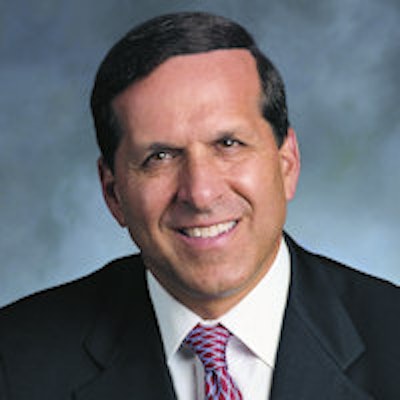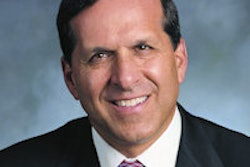
In his recent book, What Dentists Can Learn from Top CEOs, Dr. Roger P. Levin describes a wide range of effective techniques used by corporate leaders and explains how these approaches can be applied successfully in dental practices. The following is an excerpt from the chapter titled "CEOs Believe in Marketing."
At a time when marketing has become essential to their success, many dentists are held back by outdated attitudes and a fundamental misunderstanding of marketing as a business discipline.
 Roger P. Levin, DDS, chairman and CEO of practice management consulting firm Levin Group.
Roger P. Levin, DDS, chairman and CEO of practice management consulting firm Levin Group.If you think like a CEO, you will learn that marketing and practice growth go hand in hand.
The dentistry brand
Corporate CEOs understand that they are ultimately responsible for protecting and enhancing the corporate brand -- which is essentially the image of the company and everything associated with it. The image must remain positive at all times. If it suffers, the company's stock loses value, its customers turn away, and its reputation becomes tarnished.
It is very different in dentistry. Dentists have a distinct advantage over the corporate CEO because they start out with a strong positive brand the moment they open a practice. The field of dentistry has a brand identity which serves as a strong foundation for any practice. People respect and trust dentists. They know we are highly educated and trained, licensed, and regulated. In short, the overall dentistry brand is excellent.
However, like any brand, its power is directly related to how it is used in marketing and communication. The individual dental practice must add its own character to the general dentistry brand and then convey this distinctive image to key segments of the market.
Until recently, most practices could "get their share" of the market just by hanging out a shingle. Marketing was not a major concern. Then the Great Recession of 2008 changed dentistry forever. Marketing was no longer an option, but a necessity. The total number of new patients quickly dropped by a third, and it still has not recovered.
 What Dentists Can Learn From Top CEOs by Dr. Roger Levin.
What Dentists Can Learn From Top CEOs by Dr. Roger Levin.There are more dentists competing for fewer new patients. Who will win more patients is now the question. The answer? Those with the most effective marketing program.
Moving beyond the law of supply and demand
When the demand for dental services was high relative to the supply of dentists, there was no need to worry about declining practice production. Most practices grew every year. For example, my dentist grandfather increased his gross revenue each year by exactly 5%. How did he consistently hit this number? He simply raised his fees by 5% each year. The law of supply and demand worked in his favor, and he never had to worry about business matters. There was no reason for him to think like a CEO.
Dentists now have to follow the example of CEOs because supply and demand in dentistry have reversed. There simply are not as many patients available per dentist -- and certainly not as many fee-for-service patients as in the past. A dentist must now attract new patients and encourage referrals. Those are marketing functions.
To succeed in the new economy, dentists must recognize marketing as a standard business tool. In fact, numerous studies show that as businesses grow their marketing, expenditures rise accordingly. CEOs understand they must keep fueling growth to avoid losing ground in their markets. Dentists must think the same way, stimulating continuous growth to avoid flatlining and eventually slipping into decline. As I have often said in my seminars, "Growth is the enemy of decline."
Roger P. Levin, DDS, is the chairman and CEO of practice management consulting firm Levin Group.
Special for DrBicuspid.com members
The digital version of What Dentists Can Learn from Top CEOs is now available online for $29.99.
DrBicuspid.com readers can also receive a one-hour, no-cost practice diagnosis by phone with a certified practice analyst to assess and increase practice production. To schedule, call 888-973-0000.
The comments and observations expressed herein do not necessarily reflect the opinions of DrBicuspid.com, nor should they be construed as an endorsement or admonishment of any particular idea, vendor, or organization.
Copyright © 2015, Levin Group, Inc. Reprinted with permission.



















